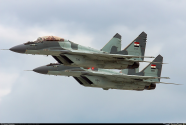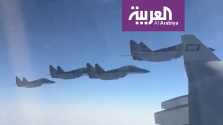Not sure what to make of the analysis. There's nothing egregiously wrong about it, but the authors do make lots of minor errors that are all to the detriment of the Su-75 and substantially distort the final verdict. For example, they put a little too much faith in how representative the LO treatments are on what is a mock-up after all. Mainly though, while I mostly agree with the weight analysis (personally I think it's a bit lighter, but ultimately it is roughly F-35 size, so fair enough) the premise that the F-35 represents a benchmark for good design is flawed. For example, the Su-75 is criticized for having a higher fineness ratio and lower wing loading, resulting in greater subsonic drag (wetted area).
That's not incorrect, but the F-35A has its compact packaging and small wings due to the requirement for commonality with the STOVL version, not because these are otherwise desirable characteristics. Its fuselage length is constrained by elevator size on USMC LHAs and wing area by weight reduction considerations for vertical take-off/landing. This is part of the reason why the Yak-38 and original metal-wing Harrier have almost F-104-like tiny wings! In fact, the Su-75 is a lot more typical of a modern supersonic fighter than the F-35 on both these counts, and by the standards applied by the authors of the paper virtually all other designs would fare poorly too. Including, notably, the J-20 and J-10 with their deliberately high fineness ratio (for low supersonic drag in absence of state-of-the-art engines) and characteristically delta-canard low wing loading... Makes this judgement all the more weird, supposedly coming from people who would be more keenly aware than most of these facts.
Similarly, the ruddervators are on the one hand criticized for lack of effectiveness, but then so is the remedy (the body flaps). Yes, they don't compare to the Hornet's tailerons in effectiveness, but they don't need to since as in the (correctly identified) analogues on the X-29 and MiG 1.44, they are not the primary means of pitch control. Those would be the canards on the X-29 and 1.44 or the ruddervators on the Su-75. There's nothing wrong with this solution at all, in combination this configuration should give plenty enough pitch authority while being rather stealthy too.
Then we get to the payload - no the Su-75 does not have only 1 AAM less than the Su-57, as the ability of the main bay to hold 3 missiles reads across, giving 8 missiles for the larger fighter. Conversely one AAM less is suddenly a big deal when comparing against the F-35 though, despite the fact that its 6 missile config hasn't even been tested yet. Regarding the radar, the Irbis is a PESA that is only losely related, more pertinent is the fact that the array on the Su-75 is actually the same size as the Su-57's AESA (contrary to the authors' claim), it just lacks the side-looking antennas.
Long story short - it's clearly authored by people with some knowledge of the subject matter, but feels like a very sloppy effort.





